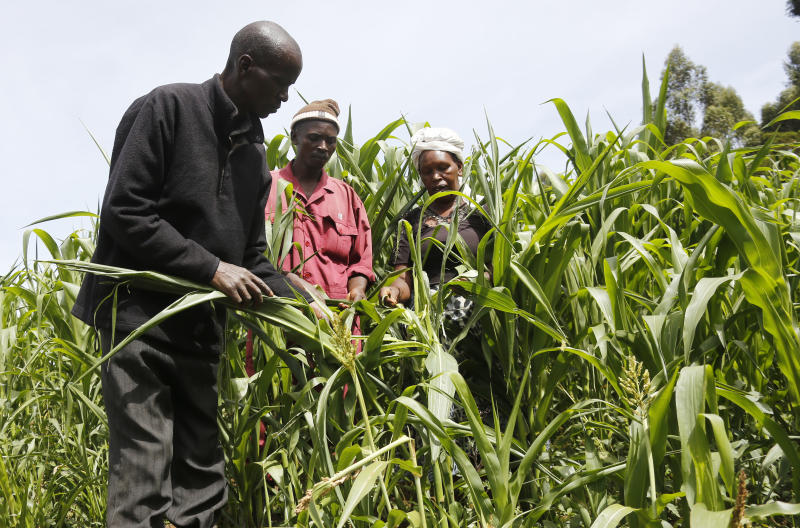Introduction
Maize is Kenya’s staple food crop and a cornerstone of household food security and rural livelihoods. Yet maize yields remain well below potential on many smallholder farms because of declining soil fertility, erosion and inconsistent rainfall. Improving soil health is therefore the single most important step toward more resilient, higher-yielding and sustainable maize production. This article explains practical soil-management principles and farm-level practices that smallholders, cooperatives and extension agents can adopt to move toward sustainable maize systems in Kenya.
Why Soil Management Matters for Maize in Kenya
Maize removes large amounts of nutrients from the soil every season; when fertilizers and organic inputs are inadequate, soil organic matter falls, structure degrades, and yields decline. Long-term experiments and modeling studies in Kenya show that integrated approaches — combining mineral fertilizer with organic inputs and conservation practices — can substantially increase maize yields and maintain or rebuild soil organic carbon stocks, even under variable rainfall.
Key Principles of Sustainable Soil Management
1. Build and maintain soil organic matter (SOM).
2. Use nutrients efficiently (the 4Rs: right source, rate, time, and place).
3. Combine organic and mineral inputs (Integrated Soil Fertility Management, ISFM).
4. Prevent erosion and conserve water.
5. Rotate and diversify crops.
Practical Soil-Management Practices for Kenyan Maize Farmers
1. Integrated Soil Fertility Management (ISFM)
ISFM is the deliberate combination of mineral fertilizer, organic inputs and improved germplasm/crop management to maximize fertilizer use efficiency and build soil health. On Kenyan fields, ISFM typically means applying a small but effective dose of mineral NPK at planting together with legume residues, compost or farmyard manure, and using improved maize varieties suited to the local rainfall and disease profile.
2. Efficient Use of Organic Resources: Compost, Manure and Residues
Farmyard manure, compost and crop residues are invaluable. Long-term trials show combining FYM with mineral nitrogen sustains yields and soil organic carbon better than either input alone. Prioritize composting to reduce pathogen risk and improve nutrient availability.
3. Conservation Agriculture (CA) and Reduced Tillage
Conservation agriculture — minimal soil disturbance, permanent soil cover and crop rotations — improves moisture retention and reduces erosion. Trials across Kenyan agroecologies indicate CA combined with appropriate soil inputs gives stable yields and improved soil properties over time.
4. Agroforestry, Legumes and Intercropping
Agroforestry trees and shrubs (e.g., Faidherbia albida, Calliandra, sesbania) replenish soil fertility, provide mulch and improve household resilience. Intercropping maize with legumes supplies nitrogen and organic matter while improving yield stability.
5. Soil pH Management and Liming
Soil acidity limits nutrient availability in many maize regions. Where soil tests show low pH, applying lime can increase phosphorus availability and improve crop response to fertilizers.
6. Targeted Soil Testing and Site-Specific Recommendations
Soil testing allows farmers to use the right fertilizer blends and rates for their fields. The 4R nutrient stewardship approach helps match fertilizer strategies to soil type, expected yield and cropping history.
7. Erosion Control and Water Management
On sloped or erodible fields use terraces, contour ridges, vetiver grass strips or tied ridges to slow runoff and retain topsoil and water. Mulches and cover crops also reduce erosion and conserve moisture during dry spells.
Integrating Pest, Disease and Nutrient Management
Healthy soils reduce vulnerability to pests and diseases. Balanced nutrition prevents plant stress, and rotations/intercrops break pest cycles. Where pesticides or fungicides are required, integrated pest management (IPM) should be prioritized to protect soil biological life and pollinators.
Socio-Economic Considerations and Smallholder Realities
Adopting improved soil management depends on access to inputs, labor availability, markets for surplus maize, and extension training. In Kenya many households must choose between using stover for fuel or livestock feed and leaving residues for the soil; context-specific strategies are necessary. Farmer groups and cooperatives can help scale practices that work.
Monitoring, Record-Keeping and Adaptive Management
Farmers should keep simple records of cropping sequences, inputs applied and yields. Monitoring soil indicators such as earthworm presence, residue breakdown, compaction and crop vigor allows farmers to adjust practices over time.
Policy, Extension and Research Priorities in Kenya
Scaling sustainable soil management requires supportive policies, subsidies that encourage efficient fertilizer use, access to credit for conservation investments, and strong extension services. Research should refine locally adapted ISFM packages, explore low-cost soil testing, quantify long-term benefits of agroforestry and CA.
Quick Checklist for Farmers
– Get a soil test or extension guidance to identify major constraints.
– Retain or add organic matter: compost, manure or residues.
– Apply a starter NPK at planting plus site-specific top-dress nitrogen if needed.
– Use improved, disease-resistant maize varieties.
– Rotate or intercrop with legumes.
– Reduce erosion with contouring, tied ridges or mulches.
– Join a farmer group to access inputs and markets.
Conclusion
Sustainable maize production in Kenya is achievable but requires deliberate soil-management decisions. Combining mineral fertilizers with organic resources (ISFM), protecting soils through conservation agriculture and agroforestry, and using site-specific nutrient management delivers the best results for yields, soil health and long-term farm resilience. With extension support, farmer experimentation and enabling policies, these approaches can help Kenya close the maize yield gap while protecting the natural resource base for future generation.

